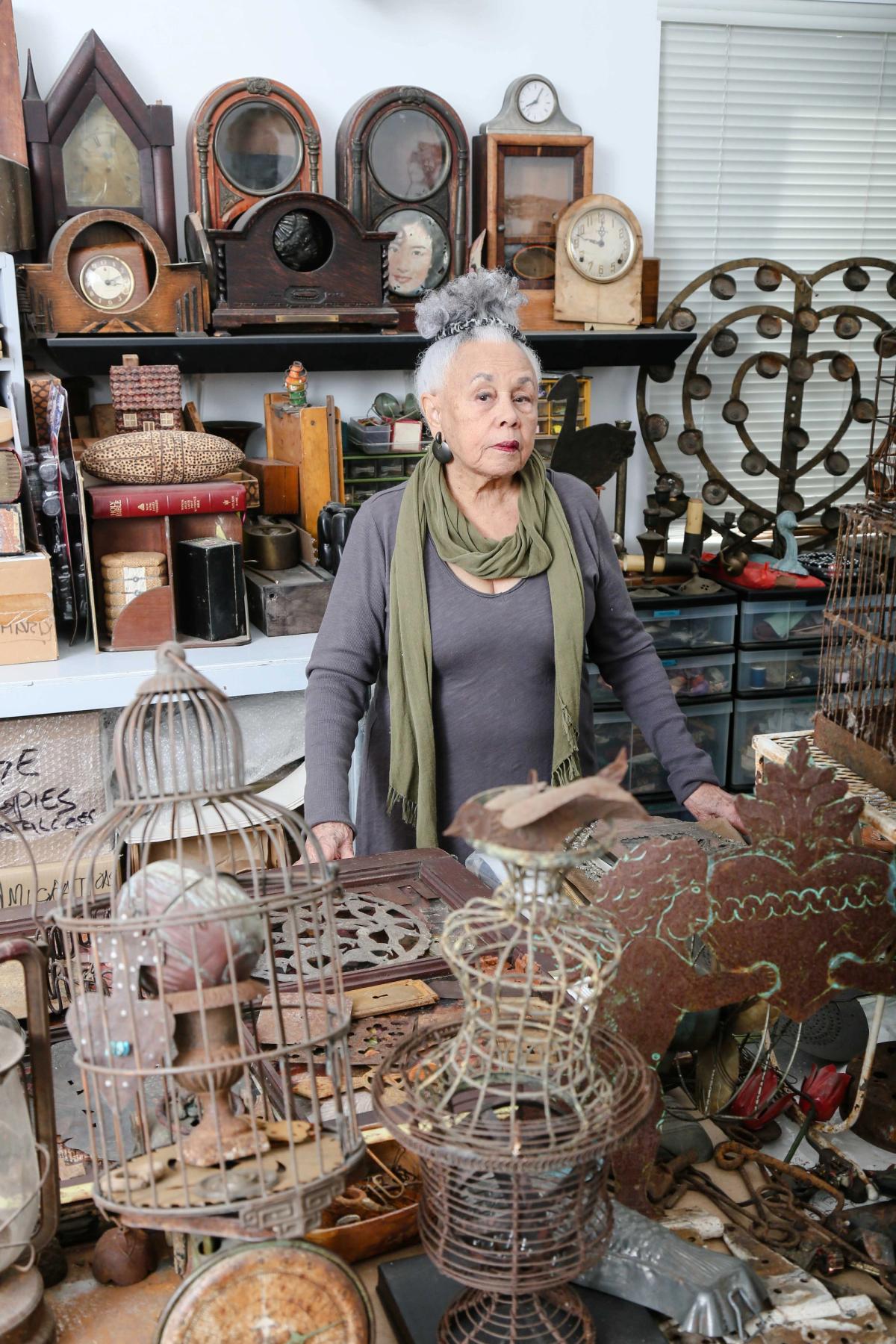In her long and prolific career, the 92-year-old artist Betye Saar has been a pivotal figure on the Los Angeles art scene, exhibiting with established artists like Charles White and younger ones, organising shows of black female artists and contributing to the creative ferment of the city. Now, the Getty Research Institute is acquiring her archive as part of a broader new effort known as the African American Art History Initiative.
“She’s a foundational figure,” says James Cuno, president and chief executive of the J. Paul Getty Trust, with a “grounding in the black experience in Los Angeles. The materials allow us to understand her thought process and the decisions she made.”
Saar began creating assemblages in the 1960s that combined her drawings, prints and etchings with found materials. In the years that followed she often delved into race by appropriating and then recontextualising images based on black stereotypes, as in The Liberation of Aunt Jemima (1972), a wooden box containing a doll of a “mammy” figure along with a broom, an image of a clenched black fist and a toy rifle. Her work is also animated by an interest in mystical and spiritual themes, as shown in the 1977 mixed-media assemblage Spiritcatcher.
The archive, which was purchased by the Getty and ranges from 1926 to the present, includes sketchbooks, prints, drawings, book illustrations, exhibition catalogues, letters, artist statements and documentation on artists with whom Saar collaborated. Cuno says he expects the material to be available to scholars in about six months, after all of the objects are inventoried.
Among the examples he cited as notable is a sketchbook from 1971 with “beautifully rendered, magical surrealist forms and shapes much related to eyes” that led to the creation of a striking sculpture titled Eye in 1972.
“As a child of the Depression, I learned at an early age the importance of saving things,” the Getty quotes Saar as saying. “‘Use it up, wear it out, make it do, or do without’ was a common saying during my childhood. As time went on, my saving turned into collecting, and collecting then evolved into the medium I use to create my art.”
The Getty describes the African American Art History Initiative as an effort to position the Getty Research Institute as a major centre for the study of that field through the acquisition of archives and related original sources. With initial funding of $5m, it plans to appoint a curator and bibliographer and envisions fellowships, an oral history project and partnerships with other institutions to digitise archival collections.
“The study of African American art history is fundamental to a comprehensive understanding of American art history,” Cuno says. “We aim to bring our resources, talents, and relationships together to promote advanced research in an area of American art that has been underfunded and underresearched.”


